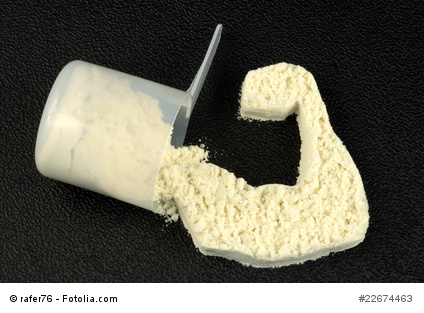HELLO! Good to see you again! In this blog post, I’m going to be going over the three essential components of how to build muscle and help you out as much as I can. After reading this article, you should find yourself to be much better equipped with the knowledge you need to make muscle gains.
I am going to discuss the 3 essential components which are the most important to building muscle and WHY they are important.
The 3 most important things needed regarding how to build muscle which I am going to discuss are:
1. Adequate Sleep
2. Superb Exercise Technique
3. Eating properly
SO, LET’S GET STARTED ON BUILDING MUSCLE!
How to build muscle with sleep and why sleep is vital

In this day and age, we are incredibly busy in our lives and it can be extremely difficult to get everything that needs to be done completed on time. Or maybe you don’t have anything that absolutely must get done, but you want to stay up late and watch the latest episode of Honey Boo-Boo or Grey’s Anatomy or whatever T.V. show is hot nowadays. The problem is, the sleep you are missing out on though is having a big impact on your ability to build muscle.
According to an article by M. Dattilo et al. from the Medical Hypotheses Journal, a lack of sleep affects our cognition, our immune system, our hormonal function and our metabolism. So despite feeling completely lousy after a bad night of sleep like you just got whacked across the face repeatedly with a bag full of quarters, not only are you not going to feel like exercising because you will be too tired, but there are plenty of other pernicious things going on in your body that will contribute to you losing muscle.
A lack of sleep causes an environment that favors muscle breakdown
Benefits of an adequate sleep:
When we get an adequate amount of sleep, our body produces more human growth hormone, which helps to build muscle. On top of producing growth hormone, our body also produces melatonin, which helps to boost our immune system and prevent us from getting sick.
Why an inadequate sleep is so detrimental to building muscle:
Proteolytic environment
Not getting enough sleep can have several deleterious effects on our ability to build muscle. As we all know, building muscle is difficult, especially if you have the body of an Ectomorph. Getting an inadequate amount of sleep creates a proteolytic environment though, or an environment that favors protein breakdown.
Increased Cortisol levels
According to an article by M. Dattilo et al., inadequate sleep causes our cortisol levels to rise. Cortisol is a stress hormone that has many negative effects on our body, including raising our blood pressure as well as causing collagen loss in our skin, making us look older. Cortisol is also involved in decreasing protein synthesis and protein breakdown.
Decreased Testosterone levels

Also in the article by M. Dattilo et al., a lack of sleep causes our testosterone levels to drop. Testosterone is extremely important in muscle growth, as it accelerates protein synthesis, inhibits protein breakdown, causes more growth hormone in our body to be secreted, as well as increase satellite cell activation and proliferation, which is important in repairing and building muscle after we exercise.
Decreased Growth Hormone and IGF-1 levels
An inadequate sleep on top of raising our cortisol levels also decreases testosterone and growth hormone levels. Growth hormone in our body encourages protein synthesis as well as promote immune function, so a poor sleep will definitely have an impact on our body in those areas. Another hormone, Insulin-like Growth Factor 1 (IGF-1) is secreted by the liver in response to growth hormone and plays a big part in allowing our muscles to grow. When we get inadequate sleep, the levels of IGF-1 in our body tend to drop dramatically, which will negatively impact our ability to build muscle.
Decreased Melatonin production
On top of all this, with decreased melatonin in our body, our immune system does not function as well and we are more prone to getting sick, which definitely won’t help us in building muscle. Talk about another nail in the coffin!
Appetite changes and Glucose intolerance:
In a study done by Spiegel K. et al., when we get inadequate sleep, our appetite goes up considerably. This is because a hormone that makes us hungry, Ghrelin, increases, while a hormone that makes us feel full, Leptin, decreases. This is doubly bad because the study also found that when we don’t get enough sleep, our body’s tolerance towards glucose drops, increasing our risk for diabetes over time, which is a very nasty condition and not something to be taken lightly.
Decreased Insulin sensitivity
Also in the study done by Spiegel K. et al., our body’s sensitivity towards insulin goes down as well after a night of poor sleep. In an research article by Schoenfeld J.B. titled The Mechanisms of Muscle Hypertrophy and Their Application to Resistance Training, insulin has anabolic, or muscle building properties through doing things such as allowing proliferation of Satellite Cells, which as mentioned above are needed to repair muscles and allow them to grow bigger after we workout. A decreased sensitivity to insulin due to a lack of sleep could indeed have a negative impact on our ability to build muscle.
Now that we have established that it is important to get enough sleep to grow muscle and why, I am now going to discuss how to EXERCISE in order to build muscle.
How to build muscle with particular Exercise Variables
Note: A lot of the information for this section I have known from my own studying and knowledge in school with regard to how to build muscle, but the research article by Schoenfeld J.B. titled “The Mechanisms of Muscle Hypertrophy and Their Application to Resistance Training” has helped me out with new information and compiling my thoughts together.

The 3 factors that are needed to cause muscles to grow bigger
According to a research article by Schoenfeld J.B. mentioned above, there are 3 necessary components that are needed in order to induce size gains in a muscle. Those 3 things are metabolic stress, mechanical tension and muscle damage.
Why mechanical tension is important to build muscle
When you do resistance training and your muscles undergo tensile and stretching forces, the skeletal muscle integrity is disturbed, leading to a cascade of events that cause the release of hormones and chemicals in the body that can lead to a hypertrophic response, or causing you to more effectively build muscle.
Why muscle damage is important to build muscle
When you exercise hard enough, your muscle fibers and connective tissue become damaged and torn. Macrophages then come in and clear out the cell debris left over from the exercise, which then leads to satellite cells becoming proliferated and activated, repairing the damaged muscles as well as allowing them to grow bigger. Growth factors are also released at this point, further contributing to muscle growth.
Why metabolic stress is important to build muscle
Metabolic stress in your body is caused by short duration, more higher intensity exercises. Think of what bodybuilders do. When your body is undergoing metabolic stress, lactic acid and other metabolites are building up. This stress has been shown to cause muscle growth due to various chemicals being released. Also, the acidic environment may cause further muscle damage, leading to an increased response that triggers muscle growth in your body.
So now that we’ve covered how to build muscle using these 3 vital variables, I’m going to now go over HOW TO EXERCISE to build muscle
How to build muscle by exercising effectively

Now I am going to go over what you should keep in mind whenever you are exercising to gain maximal results from your workouts and how to build muscle and get the most bang for your buck.
Volume
When we workout, a set is defined as a group of repetitions when we lift. A repetition would be defined as lifting the weight once. Exercise volume would be defined as the total amount of sets and reps we perform in an exercise.
Higher volume sets are shown to cause more metabolic stress on the muscle being worked out and to cause a greater release of growth hormone. For example, if you were doing dumbbell curls, you would get more out of your workout if you performed 4 sets of 12 rather than only 2 sets of 12.
The article by Schoenfeld J.B. suggests one should ‘overreach’ in their workout, which in this case would be a short term volume increase in your workout, where the body significantly increases protein accretion. This should only be done on occasion though followed by a rest period though where after you are done working out that muscle with a higher exercise volume, you give it a rest as too much overreaching can lead to an overtrained state, where your testosterone levels drop and cortisol levels increase, leading to increased protein and muscle breakdown. So use overreaching sparingly. For example, on leg day I may really blast my calves by doing 7 sets of 12 reps with standing calf raises, then not workout my calves for several days.
Intensity

According to the article by Schoenfeld J.B. intensity, or load, can be defined as a percentage of the 1RM (1 Rep. Max) or the amount of repetitions you can perform with a certain weight. For example, let’s say I can bench press 100lbs (I can actually do more like 260lbs, but for arguments sake here 🙂 ) In this case, 100lbs would be my 1 rep. max because I can only do it once. If I was doing 93% of my 1RM, that would be 93lbs, which according to my strength and conditioning book, if I do 93% of my 1 RM, I should be able to do 3 reps. 75% of 1RM or bench pressing 75lbs I should be able to do 10 reps, and etc.
For intensity according to Schoenfeld J.B., a high intensity is defined as over 15 reps, while a moderate intensity is defined as 6-12 reps and a low intensity is defined as 1-5 reps.
According to the article, doing less than 65% of your 1RM, or 15 repetitions, is insufficient to cause a significant hypertrophy or muscle growth response. Doing exercises for low repetitions with heavier weight, like 93% of your 1RM for example, is also shown to not be as effective as doing weight that you can handle for 6-12 repetitions.
Why is this so? Higher repetitions (15+) don’t recruit enough motor units and muscle fibers, while lower repetitions (1-5) don’t cause enough metabolic stress. The higher repetition training is not stressing the muscles enough to maximally recruit them. The lower repetition exercise is using the phosphocreatine system, which does not build up metabolites and stress the muscles being worked out like anaerobic glycolysis does, which is the system that is used when you do repetitions in the range of 6-12.
On top of the metabolic stress from moderate repetitions, significant growth hormone and testosterone is released which further stimulates your ability to build muscle.
Also according to the article, exercises of moderate intensity, so around 75% of your 1RM which you should be able to do for 10 repetitions, are supposed to to increase the potential for micro-trauma to the muscle and affect a greater amount of muscle fibers than if low repetitions were done where not as many fibers would be affected.
Rest breaks taken
Rest breaks should ideally be between 60-90 seconds if you want to build muscle. A rest break that is too short, such as 30 seconds, will not allow the muscle to recover its full strength and therefore won’t be able to work optimally in subsequent sets.
A rest break that is too long, such as 3 minutes, will significantly decrease the metabolic stress on the muscle, which will limit your capacity to build muscle.
According to the article I mentioned above, muscles regain most of their strength after 1 minute, which is about when you should start the exercise again if you want maximum muscle gains.
Another interesting fact from the article is that when you rest from 60-90 seconds, you are promoting a greater hypoxic (oxygen deprived) environment, which increases metabolic stress on the muscle and promotes your ability to build muscle.
Your Method of doing the Exercise

Depending on the position and angle you are performing the exercise, you are working out different areas of the muscle.
For example, when you do a decline bench press, the decline is putting more emphasis on the sternal head of your pectoralis major muscle, while an incline bench press is putting more emphasis on the clavicular part of your pec major. The position and angle you perform an exercise makes a BIG difference! If you want to maximally develop your muscular physique, it makes sense to work out your muscles from different angles and positions.
Single Joint vs. Multiple Joint Exercise
Going by the article written by Schoenfeld J.B. your anabolic hormonal levels are higher when you perform multiple joint exercises because it takes more muscle mass to do a multiple joint exercise like a squat or deadlift than it does to do a bicep curl or extending your knee straight against resistance provided by a machine.
On top of this, multiple joint exercises recruit many supporting muscles in the movement.
However, if certain muscles are more under developed when compared to others and need specific work, or you want to focus on a certain muscle group, than single joint exercises that target a specific muscle are more effective than exercises that target multiple muscles.
Speed at which exercise is performed
The speed in which you perform exercise repetitions plays a considerable impact in your ability regarding how to build muscle effectively.
The article I read says that you should perform concentric (that is, contracting the muscle and shortening it, like a bicep curl) exercises within 1-3 seconds to optimize gains. The faster movement supposedly recruits more muscle fibers. Doing the exercise slightly slower though at 2-3 seconds though promotes more of an oxygen deprived, or hypoxic environment for the muscle, encouraging more growth.
Eccentric muscle contractions (that is, muscle lengthening contractions where your muscle contracts as it is lengthened to control the movement, like squatting down slowly against gravity with weight on your shoulder) are better done slowly as in 2-4 seconds. Eccentric contractions are shown to increase protein synthesis by the body and cause greater muscle damage, therefore leading to increased muscle growth.
Exercising the muscle until failure

According to the article I’ve probably mentioned about a dozen times by now, going to muscular failure can help you better build muscle. When your muscles get fatigued, more muscle fibers get recruited to help you continue performing the exercise. Also, more metabolic stress is created on your muscles when performing repetitions in the 6-12 range, further promoting muscle building.
However, the article also cautions to not go to failure ALL the time, as it is easy to enter into an overtrained state, where testosterone levels drop and cortisol production goes up, which promotes muscle breakdown. So performing an exercise up to failure is good, up to a point. It is likely not good to do every time you workout a muscle, especially if that muscle is worked out multiple times a week.
Takeaway Exercise Pointers:
PHEW! That was a LOT to go through. Are you still with me and eager to learn how to build muscle? If you are reading this, then congratulations, you are!
Here are some takeaway points on what was just discussed regarding how to build muscle most effectively. (I’m basically concluding what the article wrote).
- Exercise repetitions should be in the 6-12 range
- When lifting, muscle shortening (concentric contractions) should be 1-3 seconds, while muscle lengthening (eccentric contractions) should be 2-4 seconds.
- Multiple sets should be done (I aim for 4 but I’d try to do at least 3 minimum).
- Muscles should be worked out from all angles to stimulate the maximum amount of muscle fibers.
- Rest periods should be between 60-90 seconds long.
- Some of your sets should be done until your muscles cannot lift the weight anymore.
- Personally, I like to throw in a drop set once every 3 weeks to cause overreaching and greater muscle gains. I only do this once every 3 weeks though to prevent myself from going into an over trained state which would be very counterproductive towards muscle building.
How to build muscle through proper eating

This section is going to be based primarily on my own experiences and what I have gleaned from reading various sources. To be completely honest, nutrition is my weakest area of knowledge, but I am learning more each day and feel like I know enough to help others out there seeking advice.
- If you are regularly working out, you will likely need around 1.5-2.0 grams of protein per kilogram of body weight each day to better build muscle. In pounds that is around .68-.90 grams per pound you weigh. So let’s take the in between number and say you’ll need 0.8 grams per pound of body weight if you routinely workout at the gym. If you don’t workout very often, you can substantially reduce this amount.
- To get the adequate amount of protein that you need, I would recommend eating at least 5 times a day to be sure you are consuming enough food to build more muscle each week. Personally, I have found if I don’t eat this many times a day that it is too hard to consume enough calories to build muscle as I will have to eat too much too fast and that certainly doesn’t feel good on my body.
- One pound is 3500 calories, so if you can consume 500 extra calories a day, that times 7 equals 1 extra pound per week. So look at your weight and how active you are, find how many calories you would ideally be consuming, then add an extra 500 calories to that amount to gain weight.
- In my previous article, research has shown that drinking a protein shake after a workout increases lean muscle mass. So I would recommend mixing a drink with carbs and protein. This will improve tissue repair and help the muscles replenish their glycogen stores.
- In another study I read by Jacques Décombaz titled “Nutrition and recovery of muscle energy stores after exercise”, it was found that it was more beneficial to take a protein/carbohydrate shake BEFORE working out, as the blood flow during the workout led to greater delivery of amino acids to muscles, causing greater protein synthesis. So with one study claiming results with taking the shake before working out and another study claiming results after, perhaps it is best to have a shake before and after working out.
- Healthy foods packed dense with calories that I would recommend to build muscle include lean cuts of meat, chicken, whole grains when eating a sandwich, skim milk and baked potatoes. Of course, the choices out there are VAST regarding what you can eat, so look and see what’s out there for yourself too!
IN CONCLUSION
So upon reading this article, you now know why it is important to sleep, how you should workout and hopefully you know some more nutrition stuff than you knew originally! Now GO out there with your new-found knowledge on how to build muscle and do it!
Works Cited:
M. Dattilo et al. Sleep and muscle recovery: Endocrinological and molecular basis for a new and promising hypothesis. Medical Hypothesis. 2011; 77: 220-222.
B. J. Schoenfeld. The Mechanisms of Muscle Hypertrophy And Their Application To Resistance Training. Journal of Strength and Conditioning Research. 2010; 24(10): 2857-2872.
K. Spiegel et al. Effects of poor and short sleep on glucose metabolism and obesity risk. Nature Reviews Endocrinology. 2009; 5: 253-261.
J. Décombaz. Nutrition and recovery of muscle energy stores after exercise. Sportmedizin und Sporttraumatologie. 2003; 51 (1): 31–38.
